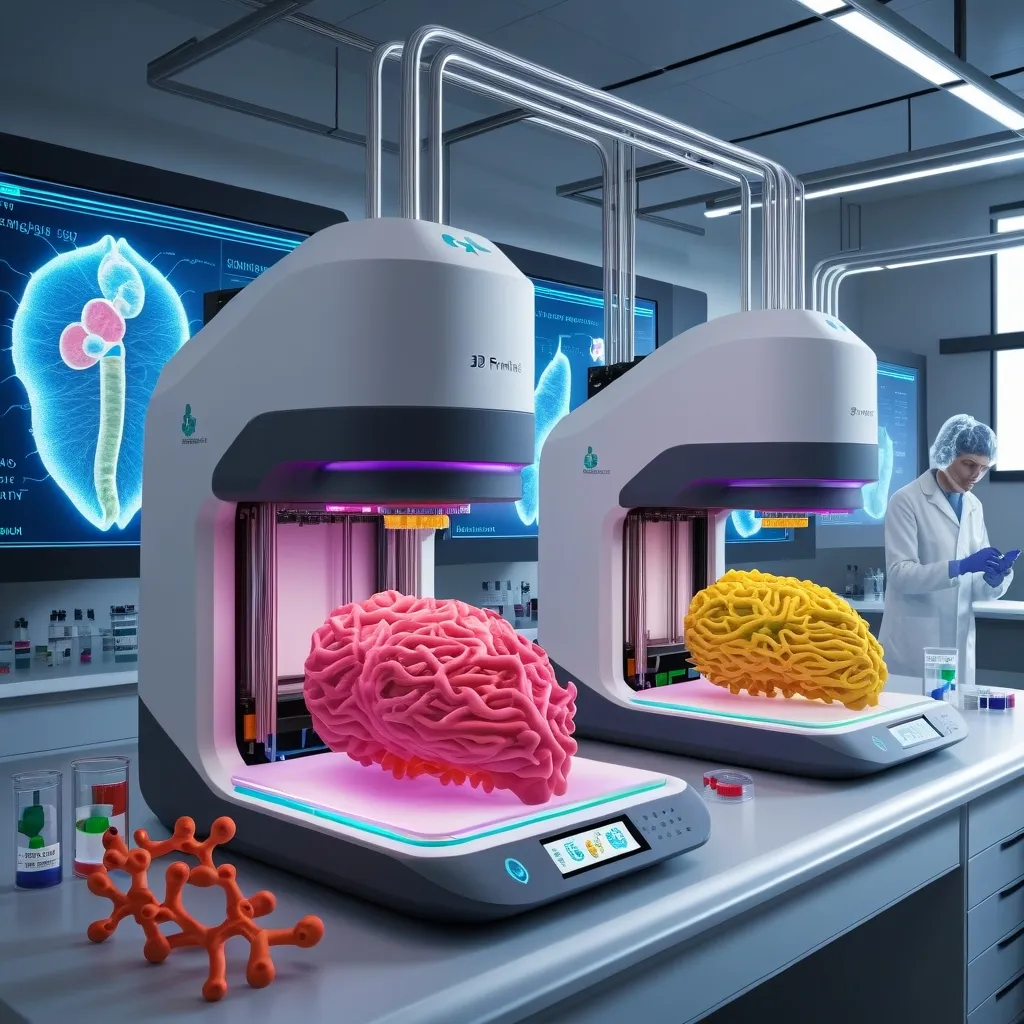Revolutionizing Medicine: The Brinter Bioprinting Revolution
Imagine a world where personalized implants are printed on demand, where drugs are developed faster than ever before, and where damaged tissues can be repaired with custom-made solutions. This isn’t science fiction – it’s the reality that Brinter, a groundbreaking Finnish company, is creating right now.
Brinter is shaking up the medical tech world with its mind-blowing 3D bioprinting tech. They’re not just making cool gadgets; they’re on a mission to save lives and make healthcare better for everyone. It’s like they’ve taken the best parts of sci-fi and made them real.
At the heart of Brinter’s magic is their 3D bioprinting technology. Picture a printer, but instead of ink, it uses living cells and biomaterials. It’s like a high-tech cake decorator, but for body parts. This isn’t your average 3D printer – it’s a game-changer for medicine.
One of the coolest things Brinter is working on is personalized implants. They’re developing the world’s first 3D bioprinted implants for fixing torn meniscus. If you’ve ever busted your knee, you know how much that sucks. Traditional fixes often fall short, but Brinter’s implants are designed to be the perfect fit, both literally and biologically.
But Brinter isn’t stopping at knees. They’re diving headfirst into regenerative medicine, which is all about fixing or replacing damaged tissues and organs. Their bio-synthetic mesh implants are like the Transformers of the medical world – they do their job and then disappear as your body heals. No more worries about metal implants setting off airport scanners!
To make all this awesome stuff happen, Brinter isn’t going it alone. They’ve teamed up with some heavy hitters in the regenerative medicine world. They’ve joined forces with the Wake Forest Institute for Regenerative Medicine and the RegenMed Development Organization. It’s like they’ve formed a superhero team for medical innovation.
But wait, there’s more! Brinter is also shaking things up in the world of drug discovery. They’ve partnered with Bayer (yeah, the aspirin people) to use 3D bioprinting in drug development. It’s like they’re fast-tracking the path from “eureka!” to “here’s your prescription.”
Brinter is also killing it when it comes to manufacturing. They’re using HP’s Multi Jet Fusion tech to make parts for their bioprinters. It’s like they’ve got a 3D printer to make parts for their 3D bioprinter. How meta is that? And it’s not just cool – it’s eco-friendly too. They’re cutting down on shipping and using recyclable materials. Mother Nature approves!
Now, let’s talk real-world impact. Imagine you’re a star athlete who just tore your meniscus. Usually, that’s a career-threatening injury. But with Brinter’s personalized implants, you could be back on the field faster and stronger than ever. It’s not just about healing; it’s about getting your life back.
The folks at Brinter aren’t just tech geeks (though they’re that too). They’re dreamers and doers who are passionate about making a difference. Their CEO, Tom Alapaattikoski, isn’t just running a company – he’s on a mission. When he talks about Brinter’s work at big-shot conferences, you can feel the excitement. It’s like he’s sharing the coolest secret ever, except it’s not a secret – it’s the future of medicine.
Brinter isn’t working in a vacuum. They’re part of a whole community of innovators who are pushing the boundaries of what’s possible in medicine. It’s like a giant brainstorming session where the best minds in biotech come together to solve the world’s health problems.
The impact of Brinter’s work goes way beyond just fixing injuries. Think about drug development. Right now, it takes years and billions of dollars to bring a new drug to market. But with Brinter’s bioprinting tech, that process could get a whole lot faster and cheaper. That means new treatments could reach patients sooner. For someone battling a disease, that speed could literally be a lifesaver.
And let’s talk about personalized medicine. We’re all unique, right? So why should our medical treatments be one-size-fits-all? Brinter’s technology opens up the possibility of truly personalized treatments. Imagine getting an implant that’s not just the right size, but actually made from your own cells. It’s like having a spare parts shop for your body, custom-made just for you.
The potential applications of this tech are mind-boggling. Need new cartilage? Print it. Got a tricky wound that won’t heal? Here’s a custom-printed patch. Damaged organ? We might be printing those someday too. It’s like Brinter is turning the human body into a fixable, upgradable machine.
But it’s not just about the tech – it’s about the people. Behind every breakthrough, there’s a team of dedicated scientists and engineers working tirelessly. They’re the unsung heroes, the ones burning the midnight oil to make these medical miracles a reality. It’s like they’re on a quest, armed with pipettes and bioprinters instead of swords and shields.
And let’s not forget the patients. For someone facing a serious injury or illness, Brinter’s work offers hope. It’s not just about healing faster – it’s about healing better. It’s about getting back to the things you love, whether that’s playing sports, hugging your kids, or just walking without pain.
The future that Brinter is building isn’t some far-off sci-fi dream. It’s happening right now, in labs and hospitals around the world. Every day, they’re pushing the boundaries of what’s possible in medicine. It’s like watching the future unfold in real-time.
As Brinter continues to grow and innovate, the possibilities seem endless. Who knows what they’ll come up with next? Maybe one day, we’ll look back on traditional medicine the way we now look at leeches and bloodletting – as relics of the past.
But for all its high-tech wizardry, at its heart, Brinter’s work is profoundly human. It’s about improving lives, easing suffering, and giving people second chances. It’s about a future where injury and illness don’t have to mean the end of the road, but just a pit stop on the journey of life.
So the next time you hear about some amazing medical breakthrough, there’s a good chance Brinter might be behind it. They’re not just changing the game – they’re rewriting the rules of what’s possible in medicine. And that’s something worth getting excited about.
In the end, Brinter’s story is more than just a tale of technological innovation. It’s a story of hope, of human ingenuity, and of the relentless pursuit of a better, healthier future for all of us. It’s a reminder that with creativity, determination, and a bit of high-tech magic, we can overcome even the most daunting challenges. And that’s pretty darn cool, if you ask me.






